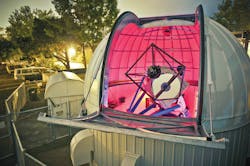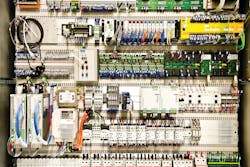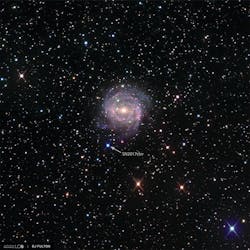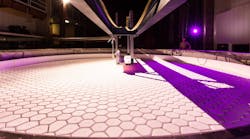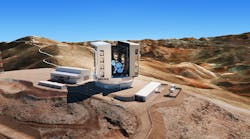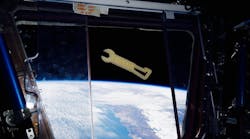Latest from Plant Operations
Observatory Teams With Automation Tech Provider for Safety's Sake
Space is vast and deep. Therefore, gathering information about transient astronomical events is like trying to find a black hole in a galaxy. To help researchers gather data on those phenomena, such as supernovae and exoplanet sightings, technologist Wayne Rosing founded the Las Cumbres Observatory (LCO) in 2005. With its global headquarters in Goleta, California, LCO operates 25 automated telescopes at seven observatories, with locations in Hawaii, Texas, Chile, Spain, South Africa, Israel, China, and Australia.
Of those 25 telescopes, 12 are 3-foot (1-meter) autonomous telescopes that LCO designed, built, and deployed, with two more to be added to the Ali Observatory in China.
“The objective is to position telescopes around the world so at least one is always in the night sky, enabling continuous observation of a target as the earth rotates,” explained Jon De Vera, senior electrical engineer for LCO.
He said the telescopes operate unattended without human intervention like a two-axis robot inside a machine safety cell, which is the observatory building. “Think of them as robots just doing the job that they’ve been programmed to do.”
Nonetheless, people must enter the observatories and interact with the telescopes for maintenance, engineering updates, and other development activities, which obviously cannot occur when a telescope is rotating, or a dome shutter is opening or closing. “Well before COVID at least, we were typically sending a crew out from our headquarters about every 18 months to one of our sites,” De Vera said.
Therefore, LCO needed safety equipment as part of the 3-foot (1-meter) class telescope project that started around 2010, De Vera noted. LCO had previously worked with Canton, Michigan-headquartered Pilz Automation Safety LP, and turned to the company again for the telescope system because LCO considers Pilz to be “the cat’s meow for industrial safety equipment,” according to De Vera.
In addition to protecting people, a safety system is needed to help protect equipment in case of a malfunction.
The process for designing a safety system began by determining the potential risks and how to mitigate them, De Vera said. After a lot of back and forth between the two organizations and various design iterations, the system was developed and installed in 2012.
Thomas Hoertig, Technical Service Engineer at Pilz said, “The safety system consists of the Pilz PNOZmulti Configurator software and the PNOZmulti controller. The software is used for programming the controller, which has a number of I/Os for uses such as emergency stops, motion controls, interlocks access doors, and motor drives. Safety contactors provide power to the amplifier stages of the motor drives, and speed monitors ensure “speed limits” are not exceeded.
In addition, LCO developed custom software that interfaces with Pilz hardware; the controller has Ethernet to enable an internet connection. “We communicate with it and basically monitor it for any faults that it might flag,” De Vera said.
When a fault is flagged, he added that LCO can sometimes fix the problem remotely. However, if an issue requires on-site attention, LCO telescopes are primarily located in areas with other telescopes, so local service technicians are available who are on contract with LCO.
“For product information and help, we’re able to contact Blair Randle, Pilz Territory Manager for assistance, if needed,” De Vera said. The number of failures can be counted on one hand, he noted, and are due to instances such as water entering the system and shorting the high-voltage line into the Pilz I/O circuit. Basically, the Pilz safety system allows access to an observatory only when it's at standstill status. “If someone unlocks the entry door to a dome, the machine stops,” De Vera said.
Once all the systems were installed, he said they have been functioning as designed, enabling LCO to continually sell telescope time, or telescope as a service. “They’ve been operating for over 10 years, and we’ve not really touched the design.”
Pilz reports that it has introduced its second-generation safety controller, the PNOZmulti2. The company stated: “With the eventual end of life for the Multi, there will be a need to supersede that product with the Multi2 with equivalent I/O and communications. It can then suggest they [LCO] start to develop solutions with Multi2 to replace the Multi.”
Although he is aware of the planned upgrades, De Vera said because of the success of the Pilz system, LCO does not currently plan to redesign the system to integrate the new hardware in the near term.
In addition, LCO looks to grow its network by partnering with existing telescopes that are automated and whose owners are interested in connecting to the LCO network via software, De Vera said.
Regarding Las Cumbres Observatory’s relationship with Pilz Automation Safety, De Vera provided a positive assessment. “They’ve been one of the best companies we’ve ever worked with. They are extremely helpful and super responsive. Any issues that we’ve had, they’ve addressed in a timely manner.”
For 75 years Pilz has been a supplier of products, systems, and services for automation technology. As the pioneer of safe automation, Pilz creates safety worldwide for man, machine, and environment with its complete automation solutions. The portfolio of the technology leader includes sensor, control, and drive technology, as well as systems for industrial communication, diagnostics, and visualization.
Las Cumbres Observatory (LCO) is a nonprofit corporation based in Goleta, California, dedicated to advancing worldwide understanding of the universe through science and education with its global network of full robotic optical telescopes. LCO began its mission in 2005 and has been operating the global network continuously since May of 2014. The network currently consists of 25 telescopes, located at 7 sites of high astronomical quality, which together serve as a single integrated observatory. The observatory is leading the future of time-domain astronomy with observations that capitalize on the network’s unique capabilities.











